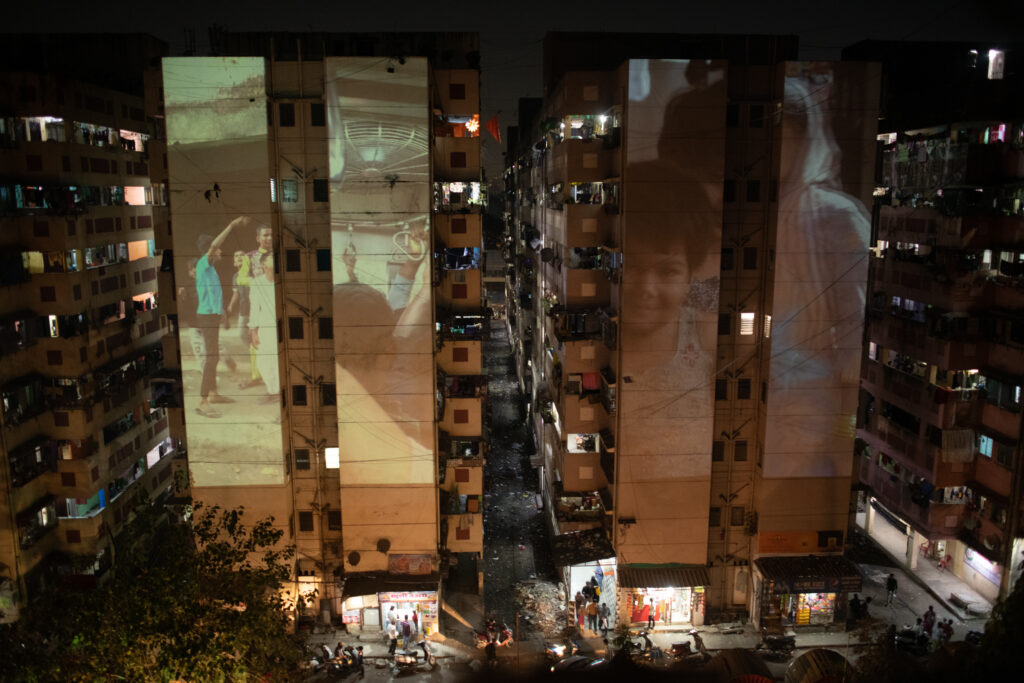Natwar Parekh (NPC) is a residential neighborhood in a marginalized area of Govandi. Located in the M East Ward of Mumbai, this area is home to a large section of the urban poor living in the city of Mumbai. A community of 30,000 people, predominantly Muslim families live together in this neighborhood (the size of a tier-3 city in India!) — tightly cramped across 61, seven-floor buildings and within 5500 occupied houses, with each house being only 225 square feet large.
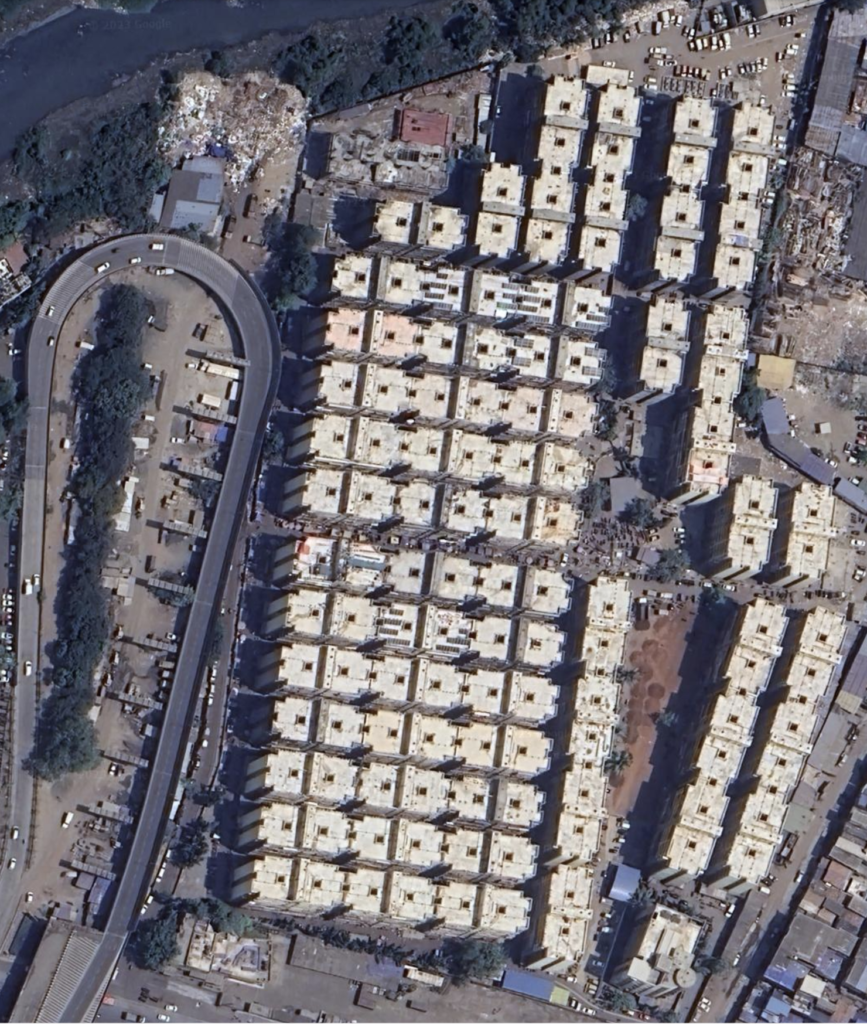
Google Earth
While moving into these houses solved a list of problems for these families, it also gave rise to a host of challenges that they have been facing for the past fifteen years. The residents of Natwar Parekh do not have access to clean air, proper ventilation, or sunlight. There are no usable public spaces within the neighbourhood—the space between two buildings is just enough for four people to walk side by side.
Natwar Parekh is rehabilitation housing for more than 30,000 Project Affected Persons, who were homeless or were slum dwellers before the city shifted them into free and affordable housing provided under the Relocation and Rehabilitation scheme by the Mumbai Metropolitan Region Development Authority (MMRDA) in 2008.

Given the enormous number of the resettled population, the MMRDA came up with a separate set of regulations to enable slum rehabilitation in Mumbai through the Slum Rehabilitation Authority (SRA) Policy. These regulations severely compromised the housing conditions of people inhabiting such resettlement sites, as design considerations- distance between two buildings, window area and open space relative to building height were completely disregarded. The cramped housing typology is believed to have incentivised private developers to build free public housing for a large number of urban poor.
Climate adversities at Natwar Parekh
Parveen Shaikh, an occupant of one of the relocation buildings in the neighborhood succinctly points out poor sunlight and ventilation as a reason for the inflated electricity bill she receives in contrast to her neighbor on the sixth floor of the adjacent building.
“Pandra saal ho gaya mujhe yaha rehte huye aur third floor hai aur ab tak mene sooraj ka roshni dekha hi nahi kabhi ghar mein. Garmi toh bahut hai magar roshni nahi dekhi sooraj ki. Uske liye fir terrace pe jao. Kaafi cheejo ka fark padta hai- kapda nhi sookhta hai; Andhera hai or sabse jyada fark humko light bill pe padta hai kyuki din raat light jalne ki vajah se. Toh humara light bill baki gharo se jyada hai beech ka building rehne se ; agar kisi ko hazaar aa raha hai toh mujhe 1500 aa raha hai”
This translates to, “It has been fifteen years since we have been living here. Despite being so humid and hot, we hardly ever receive any sunlight. Our houses are poorly lit, and scarce sources of sunlight result in excessive electricity costs. Moreover, since our building is positioned right in between two on either side, the electricity cost is much higher for us than the ones in the adjacent building. While it is 1000 rupees for them, we have to spend a minimum cost of 1500 rupees on electricity every month.”
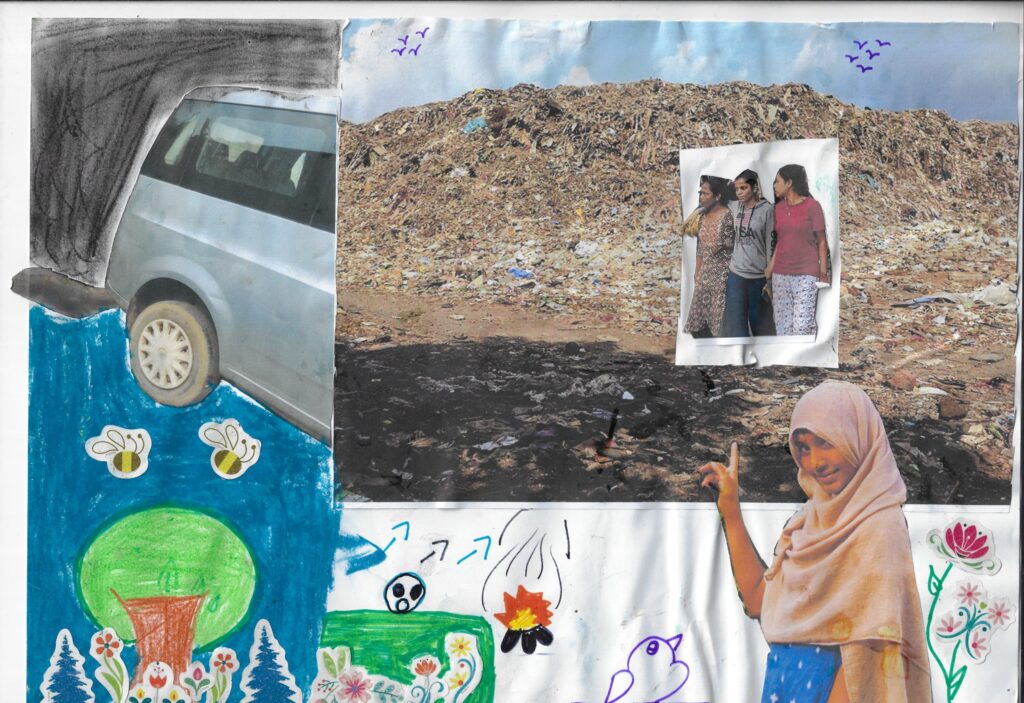
Increase in city temperature, pollution, and erratic changes in the climate along with lack of airflow in the living spaces leads to poor indoor air quality, higher indoor temperature and lack of sanitation and hygiene at Natwar Parekh exacerbates the existing vulnerabilities of the residents. Garbage-filled alleys and negligible green cover has made the residents susceptible to several health issues. Children here are malnourished, and the average life expectancy is only 39 years, with as many as 10% residents suffering from Tuberculosis.
Stenchful air circulates within parts of Natwar Parekh, since the neighborhood is located adjacent to Asia’s largest, 120 year old Deonar dumping ground. Biomedical waste treated in private companies based in the M East ward generates toxic fumes, affecting quality of life. It is in this context that understanding the everyday intersections of climate with challenges of congested housing, health, livelihood, and infrastructure as experienced together is necessary.
Climate workshops at Natwar Parekh
The obscure complexity and data-driven nature of climate discourse not only frames climate change as a distant global condition, but is far-removed to the everyday lived realities of the crisis. The net zero narrative does very little to vocalize the day-to-day experience of urban heat, poor source of natural ventilation, flooding and scarce sunlight that the community has access to as a result of the ‘designed for death’ architecture of resettlement colonies in Mumbai.

Natasha Sharma, Lead Public Arts and Design from Community Design Agency (CDA) has been developing and facilitating arts as a community engagement and pedagogical tool with the youth of Govandi. CDA collaborated with Nikhil Sharma and Himanshu Meena from Elementree Foundation to bring the climate education module, and work together with a combined methodology of arts and education to co-create a vocabulary through which the young adults and women of Natwar Parekh have been able to make sense of and characterize their experiences of climate change.

In the art workshops hosted for young adults, Mubashira shares a nostalgic memory of trawling gutter wali machli (fish in the sewers) from the sewers of the housing compound and expresses her aspiration to set up an aquarium for their exhibition. Meanwhile, Parveen during the focussed group discussion with women calls out the futility of infrastructural retrofitting carried out by the city development authority (MMRDA) in the aftermath of abysmal design.
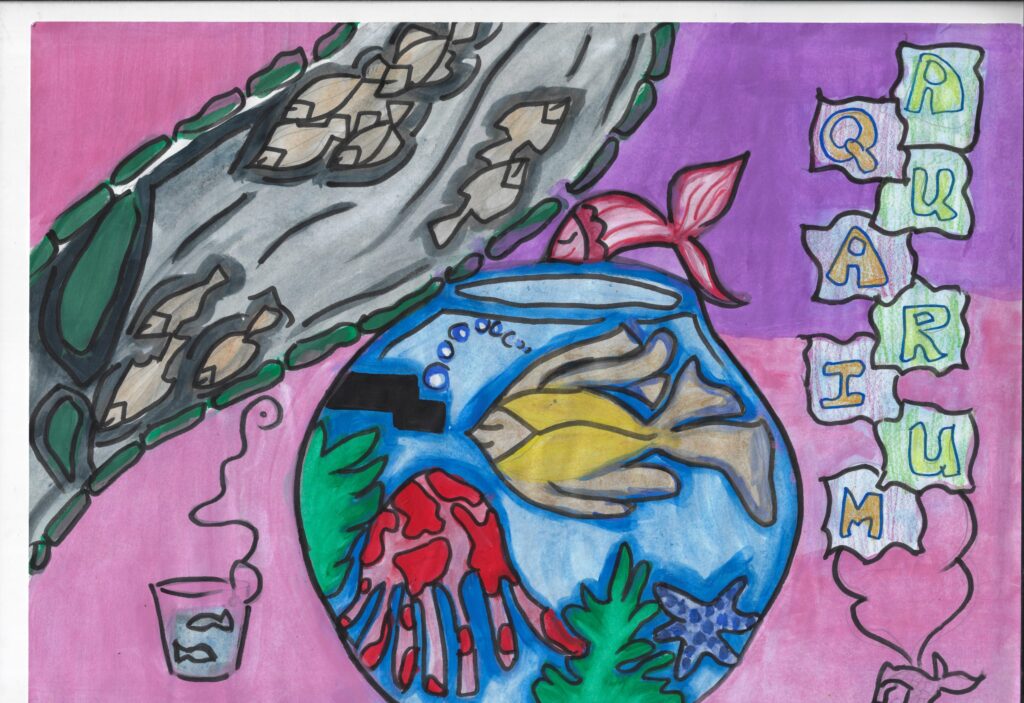
Art as a method has been useful to evoke an imaginative and hyper-local understanding of the neighborhood, while also garnering practical insights- such as suggestions to offset electricity cost by installing solar panels for each building.
Poetry, drawings, film screenings and discussions held with children, young adults and women of Natwar Parekh has enabled us to capture affective tensions between the community and their living environment. Young children in the community imagine skies in dark shades purple and gray, signifying an apocalyptic overtone to the environmental change they witness. The question “In which language does the rainfall?” from Pablo Neruda’s ‘Book of Questions’ resonated with us in the course of this project as it hinted at the fact that human experience of similar things can be vastly different based on their context. The challenge is how do we make sense of them?
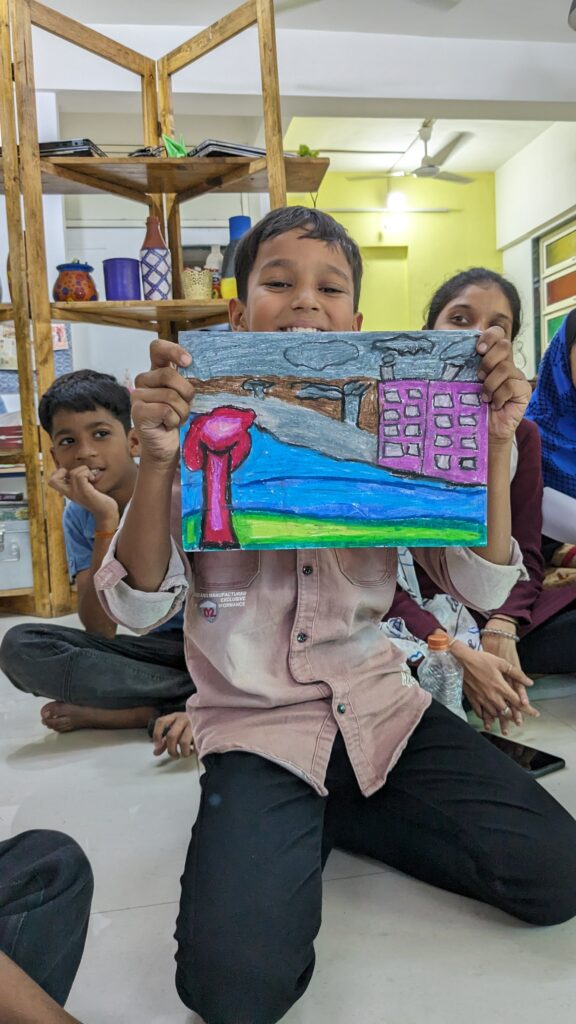
In an excerpt of her poetry, Sakina, a 16 year old woman from Natwar Parekh expresses the deplorable life of living in a housing compound with no trees and foliage. She blames the inculpable pace of the world as she is no longer able to see the butterflies and is determined to find a resolution to stop the pollution that has ruined the planet and her life.
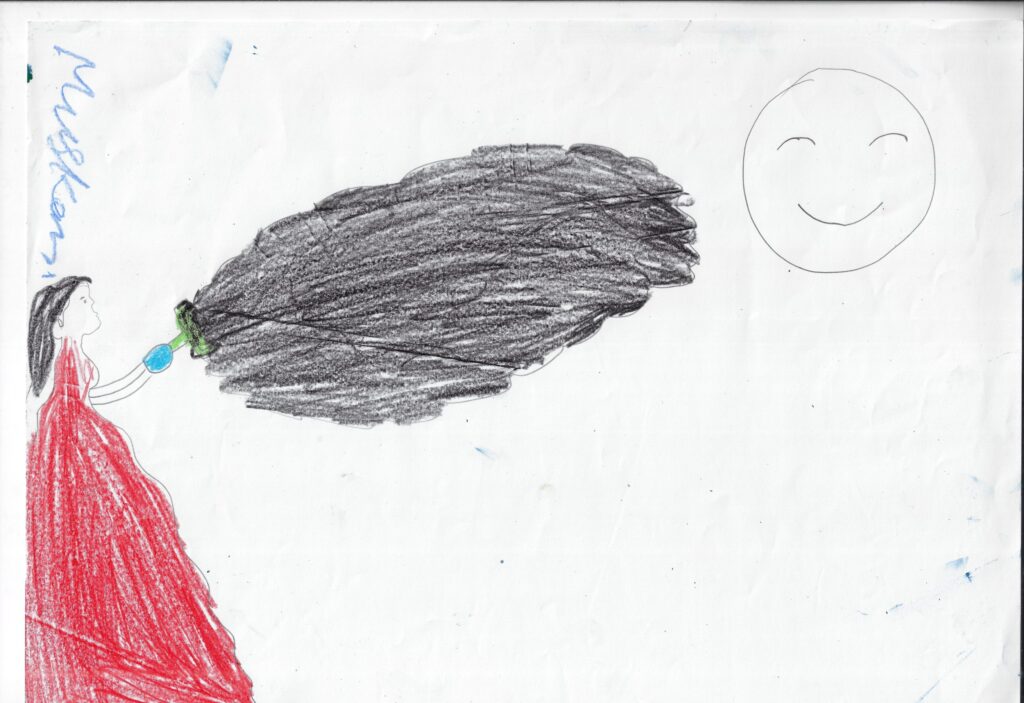
Similarly, Mubashira, a nine year old, brings out a sharp contradiction that she observes in her immediate surroundings through her poetry. She compels her audience to imagine the congestion of vehicles amidst the negligible trees in her housing compound; the frequency of accidents as opposed to the scant number of people; and slides in her thoughtful suggestion to plant trees for cooler air in tiny corners of the compound in order to save space. Such remarkable spatial awareness reflected through art certainly informs everyday planning decisions and encourages insights for climate action at a neighborhood level.
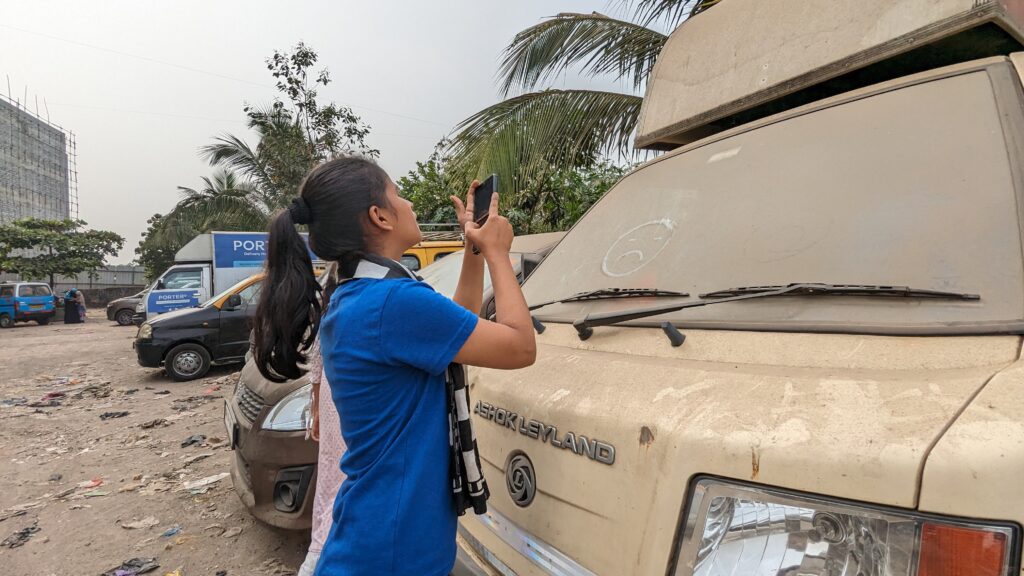
Photography sessions with the young groups have pushed them to be more observant of their natural surroundings. Role playing and improvisations in the theater sessions have propelled them to think playfully and critically about cause and effect related to environmental degradation. Unclogging sewage drains with responsible waste disposal to prevent flooding, keeping windows open during daytime for indoor thermal comfort, planting more trees in the compound for cooler air and reducing AC usage, were some of the resolutions reinforced during the workshop.
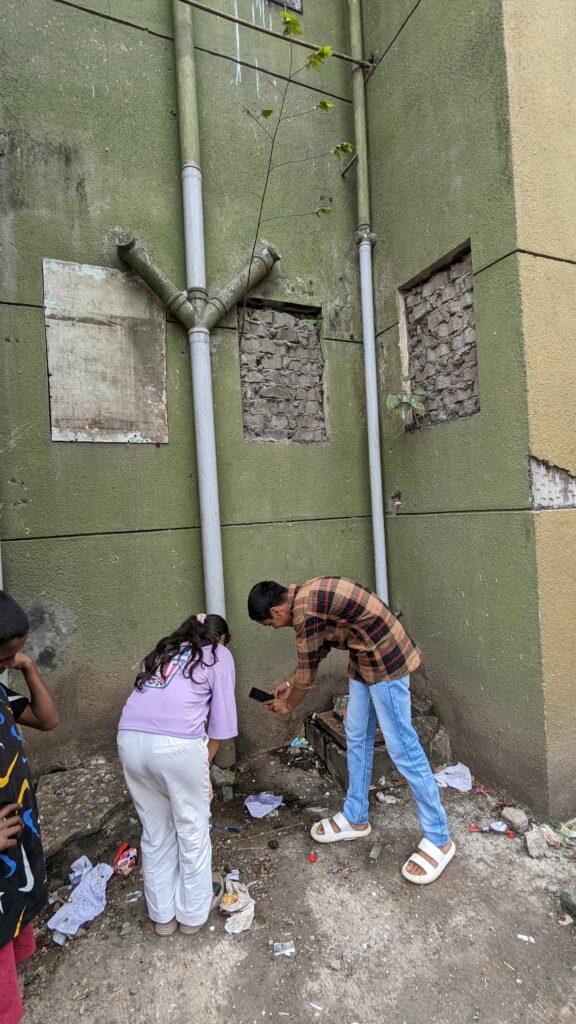
Next steps
Our learnings from the workshop have helped us understand that mitigation practices such as microgreening among others, need to take into account the inadequacies of land and built environment. Moreover, state interventions in vulnerable neighborhoods need to integrate a climate adaptive approach in infrastructural retrofits and repair for existing housing. Dense neighborhoods like Natwar Parekh ask important questions on rehabilitation and planning for those in the urban margins.
Taking our work further, we intend to disseminate these learnings and create awareness among the community by using innovative artistic methods. Through consultations with municipal corporations and development authorities, we hope to bring in resources that support effective climate mitigation interventions at Natwar Parekh.
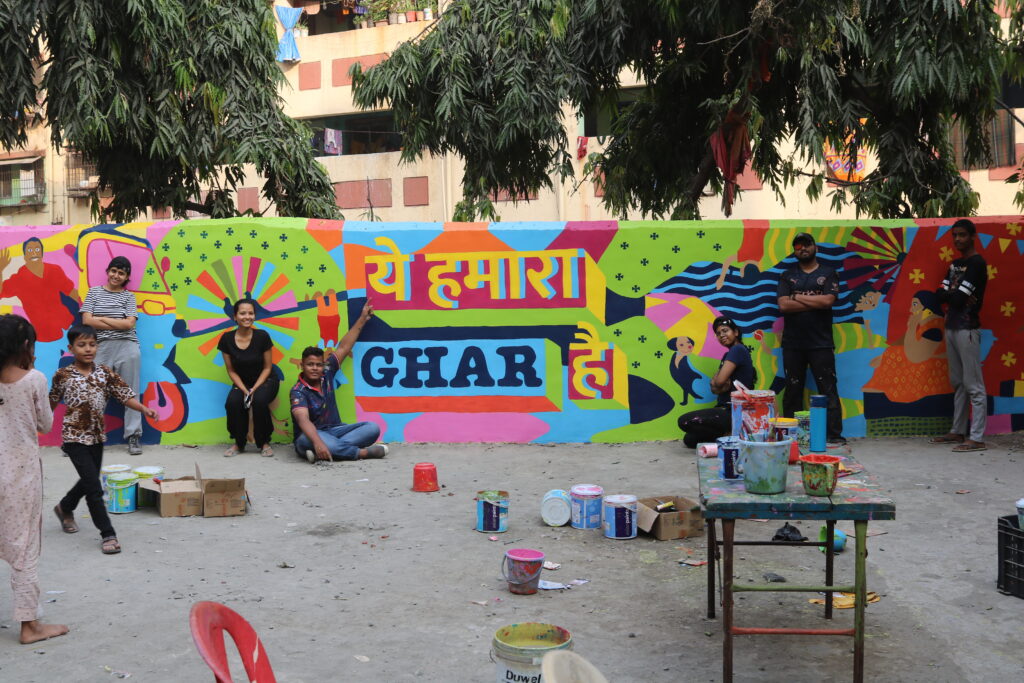
Photos by Rajesh Vohra & Mansi Bhalerao
